Pictures of a Lost World
On August 30, 2000. accompanied by a friend, we visited three
former Saxon villages from Transylvania, where just 10 years ago
the majority of the population were Saxons (Germans settled in
Transylvania by Hungarian kings at the beginning of the 13-th
century).
The route:

Schweischer - Sövénység - Fişer
(German / Hungarian /Romanian name)
In Schweisher we took only these two pictures.
Of course, the house on the left, is not the only one abandoned
in the village. You may see very clearly on the photo that the
two neighboring houses were built in the same architectural
style, but while the left one was abandoned, a new owner came for
the one on the right side.

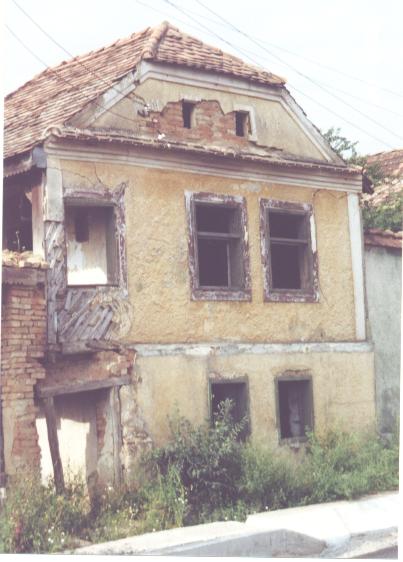
Bodendorf - Szászbuda - Buneşti
When we visited Bodendorf there still were 3 (three)
Saxon families. The old Saxon man whom picture you can see below
emigrated also to Germany, but he wasn't able to integrate in the
new environment, so he came back in his home village. He shown us
the Lutheran church, which started to decay and has its doors
locked much of the time.

Above: The Last of the Saxons?
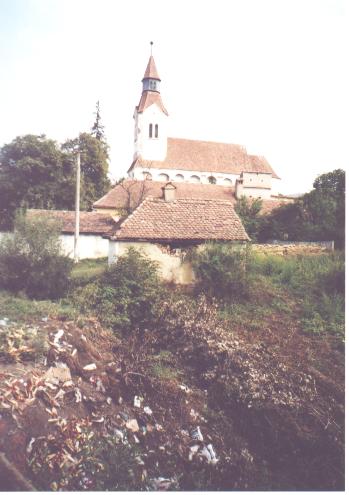
On an arch that holds up the church roof we can
see the year of erection and subsequent repairs: 1519, 1680, 1775,
1856, 1950.
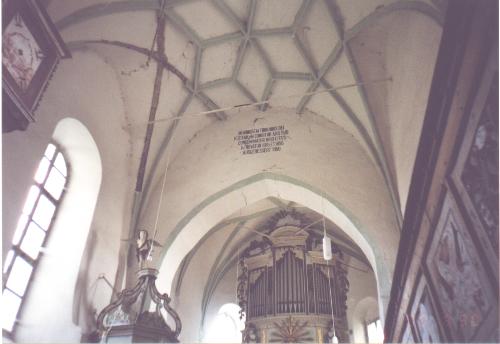
On the seats, where once were the prayer-books,
now are lying trim-stones fallen down from the decaying ceiling.

A gateway (entrance) and a house, near to the
church, in a back-street.


Those few Saxons that we found said "Welcome!"
and shown us what is still left.

This house entwined with vine was built in 1799,
as the writing carved in the wooden beam from the basement says.


And some of the new settlers...
(However, the truth is that most of the newcomers are Romanians.)
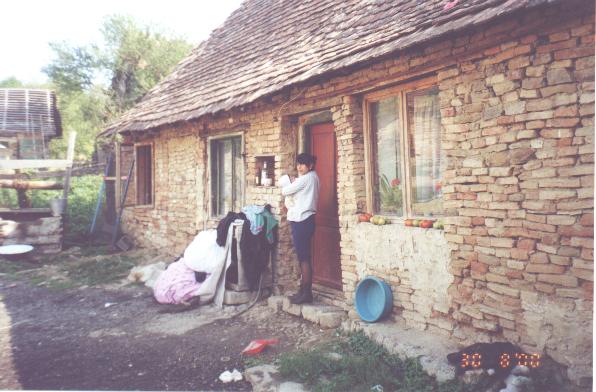

Otherwise, the Gypsies weren't unfriendly with
us, either. The older woman from the picture above told us that
they bought the house (maybe from another second hand buyer) for
250, at the beginning of the 90s. What was the meaning of the sum
of 250 (thousand leis, or maybe Deutsch Marks), we weren't able
to find out after all. She also told us that they want to build
or repair someting in the courtyard, and the bricks that you can
see on the righ were brought for that purpose.
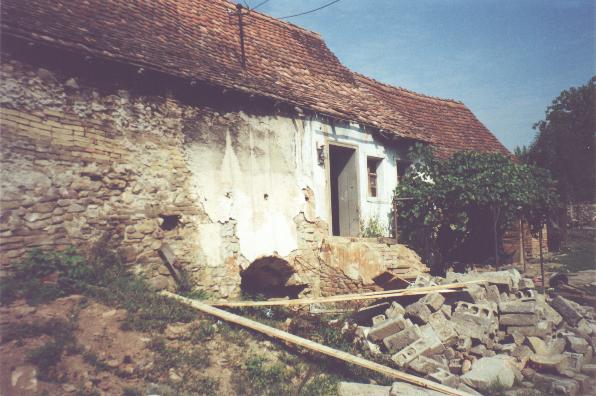
View of a street:

Keisd - Szászkézd - Saschiz
At Keisd we didn't manage to talk with Saxons,
and couldn't see the church from the inside, either. We succeeded
to enter only in the churchyard encircled by walls like a
fortress. However, thanks to its imposing size, the fortified
church yields a magnificent view also from the outside even now,
when it became to a wreck. How could it be that on a Sunday, a
few decades before, when it was in a good condition, with
believers all around who came to the mass, while bits of the
majestic organ music could be heard from the outside, and then
the psalms were intoned in a local dialect of the German language?
Where are all those people gone, why did they leave, or why did
they have to leave?
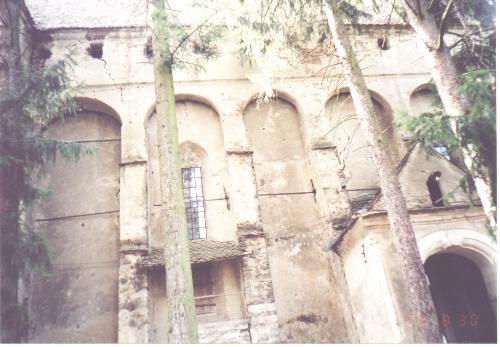
The cracked wall of the bell-tower, close to
the church, inside of the fortress walls. You can distinguish
very well the hidden orifices from the upper side, from where the
defenders could wing arrows, shoot, or throw hot lead and black
pitch in the necks of the enemies who tried to climb up the walls
during the wars :-)
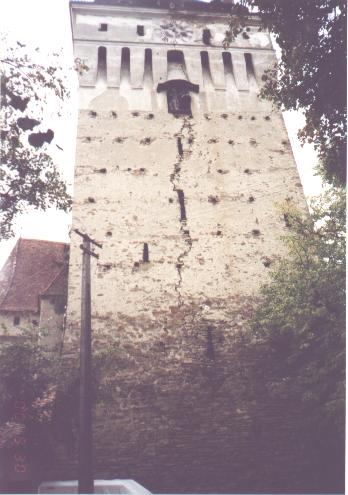
The square from around the church, with geese
at foot-pace, reminds us of the good old times...
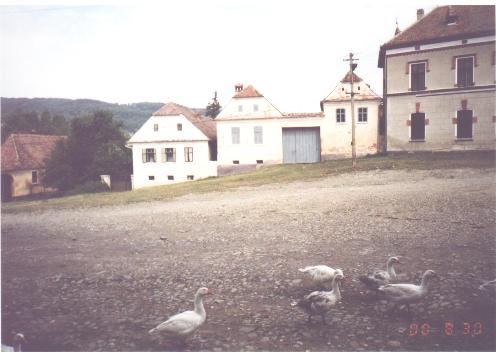
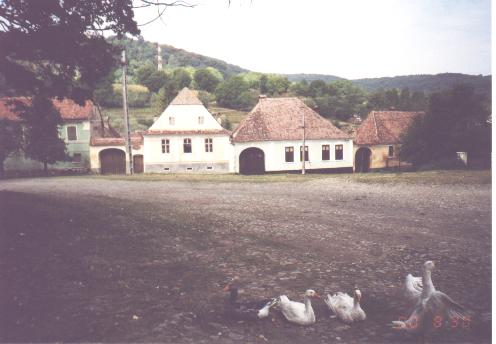
------------------ The End! Is it, Really?
------------------
(c) Tófalvi Péter, 2000.
"Since 1945, approximately 300,000
Hungarians, the same number of Germans, and approximately 50,000
Jews (who survived the Holocaust), along with a great number of
Romanians emigrated to the West: Europe, America, or even
Australia. The exodus of Hungarians and Germans continued even
after the fall of communism of 1989. Also we have to note that
after 1918 (or more precisely after 1920, when the Treaty of
Trianon was signed), as part of a Romanian state-controlled
process, a great number of Romanians settled in Transylvania,
coming from South and East, from across the Carpathians."
(Excerpt from: http://www.oocities.org/erdelyilobby/info_e.htm
See also: Emigration from Romania)